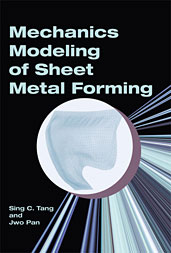Technical Paper
Effect of Supercharging on the Intake Flow Characteristics of a Swirl-Supported Engine
2020-04-14
2020-01-0794
Although supercharged system has been widely employed in downsized engines, the effect of supercharging on the intake flow characteristics remains inadequately understood. Therefore, it is worthwhile to investigate intake flow characteristics under high intake pressure. In this study, the supercharged intake flow is studied by experiment using steady flow test bench with supercharged system and transient flow simulation. For the steady flow condition, gas compressibility effect is found to significantly affect the flow coefficient (Cf), as Cf decreases with increasing intake pressure drop, if the compressibility effect is neglected in calculation by the typical evaluation method; while Cf has no significant change if the compressibility effect is included. Compared with the two methods, the deviation of the theoretical intake velocity and the density of the intake flow is the reason for Cf calculation error.

